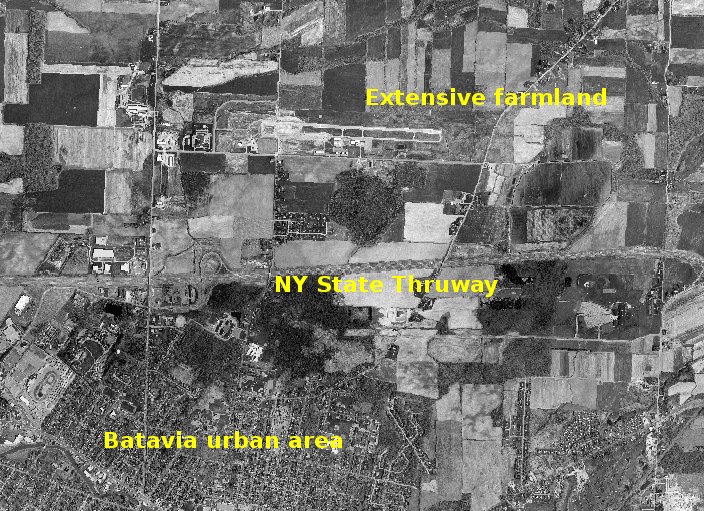Genesee County
PDF report: pesticides-genesee-april11

Entering Genesee
Genesee County was chosen for study because of the elevated intensity use of pesticides more likely to be mobile and persistent, as shown on the Groundwater Ubiquity Score (GUS)-weighted overview maps. The county’s population center in the city of Batavia depends partly on ground water and partly on Tonawanda Creek for community and private water supplies. Some villages in the eastern half of the county use surface water sources, including connections to the Monroe County Water Authority which draws from Lake Ontario. Private wells serve rural residents, campgrounds, and hamlets.
Genesee County’s most prominent ground water features are a large primary sand and gravel water supply aquifer in the Batavia area and the Onondaga Limestone formation that runs in an east-west band across the center of the county. The Limestone has many sinkholes, some of which overflow in the springtime, and some of which occur in river beds, causing losses of stream flow into bedrock. Land use is dominated by agriculture, particularly dairy, cash crops and vegetables. From the air (below), the agricultural land use pattern is striking, in some areas covering nearly 100% of the land with cropped fields.
We had the privilege of working with the County Soil and Water Conservation District (SWCD) and the County Health Department. The SWCD recommended candidate sites and the Health Department sampled the wells of those landowners who consented to participate.
Results
Genesee County was the site of the first well sampled to date that had levels detected by the DEC laboratory, with 2 micrograms/liter of the herbicide metolachlor. ELISA immunoassay results for that well were similar, as were resampling results two months later. A shallow well casing and nearby pesticide use apparently contributed to this case. There is no drinking water standard for metolachlor. The only other detections in the county were nonquantifiable traces of atrazine in one well and in the resampling of the well where metolachlor wherein was detected. Nitrate levels were rather high in some areas, with multiple wells (including the one with quantified metolachlor) having over 10 mg/L of nitrate-N. Property owners with wells having over 6 mg N/L nitrate were given a Cornell fact sheet about nitrate and health:
Overall, the level of detections was low despite the very high GUS-intensity map. Genesee county was thus the fifth county where testing of rural wells for pesticide residues found little evidence of contamination concerns.
This fifth-round work in Genesee County was followed by work in Wayne County and a project focusing on Karst terrain.
Later resampling
Genesee County wells were sampled originally in 2009, and a few were resampled once in 2012 as part of a project focusing on Karst terrain. Well GC-07 sampled in 2009 had been resampled in 2009, then in 2010 because it had notable metolachlor. Then several wells were sampled four times in 2016-2017. As in Cayuga and Wayne Counties, the most common detections were the herbicides metolachlor and atrazine, and their environmental metabolites.
Fully detailed resampling results, with the original results from the same wells, are included in a PDF:

Aerial view of Batavia area (lower left). Horizontal band across center is NYS Thruway.
Last updated 2023-09-21 sp17 AT Cornell.edu.